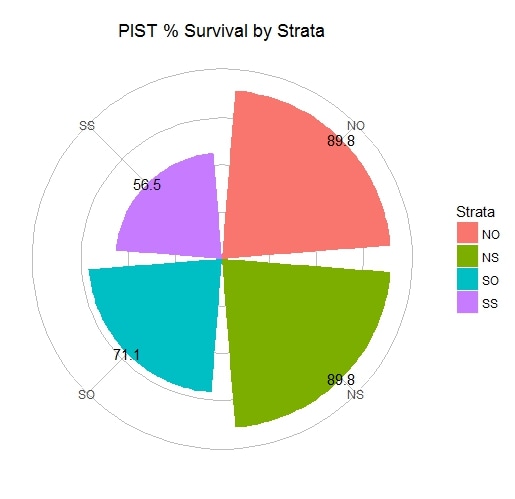|
We were out on 18 April 2017 to conduct a post-snow melt, pre-dry season seedling survival survey on our plots in the Jemez Mountains. You can read more about the overall project here, but a quick recap: We planted seedlings from four species stratified based on aspect (north, south) and cover (shrub, no-shrub) this past fall in the footprint of the 2011 Las Conchas Fire. We found that our elk deterrent fencing was inadequate in a few areas and that mmmm, soil moisture and temperature sensor wires sure do look tasty to an elk. S.H. Hurlbert in his classic 1984 paper on pseudoreplication states that replication controls for, among other things, “non-demonic intrusion”. He then goes on to state “If you worked in areas inhabited by demons you would be in trouble regardless of the perfection of your experimental designs. If a demon chose to “do something” to each experimental unit in treatment A but to no experimental unit in treatment B, and if his/her/its visit went undetected, the results would be misleading.” Further in the same paragraph he states “Whether such non-malevolent entities are regarded as demons or whether on simply attributes the problem to the experimenter’s lack of foresight and inadequacy of procedural controls is a subjective matter.” I guess in the case of our planted seedlings, we foresaw the potential for elk to eat our seedlings and therefore exhibited some experimental foresight. However, we didn’t foresee the appeal of sensor cables to elk. Either way, it looks like we’ve got a case of “non-demonic intrusion” and a case of “demonic intrusion”. Fortunately, it is pretty clear when an elk decides to either eat the tasty seedling treat or just ripped it out of the ground and we can look at the effect of including this information or excluding it in a summary presentation of the information. Even though I still don’t have any resolution regarding whether or not elk qualify as demons, we can at least look at initial survival of the four different seedling species. The labels are as follows: PSME = Douglas-fir, PIPO = ponderosa pine, PIED = pinyon pine, and PIST = southwestern white pine. The strata are labeled as follows: NO = north aspect without shrubs, NS = north aspect with shrubs, SO = south aspect without shrubs, and SS = south aspect with shrubs. We had higher percent survival on north aspects for all species and lower percent survival on south aspects. Southwestern white pine (PIST) seemed to have an especially tough time on south aspects, as compared to the other species.
One of our hypotheses for this project is that seedlings will have higher survival on north aspects than on south aspects and that on south aspects, survival will be higher with shrubs than without. We’ll see how this plays out during the May-June dry period. So, stay tuned for the next post where we’ll also have some temperature and relative humidity data by strata as well.
0 Comments
Your comment will be posted after it is approved.
Leave a Reply. |
Details
Archives
October 2023
Categories
All
|







 RSS Feed
RSS Feed